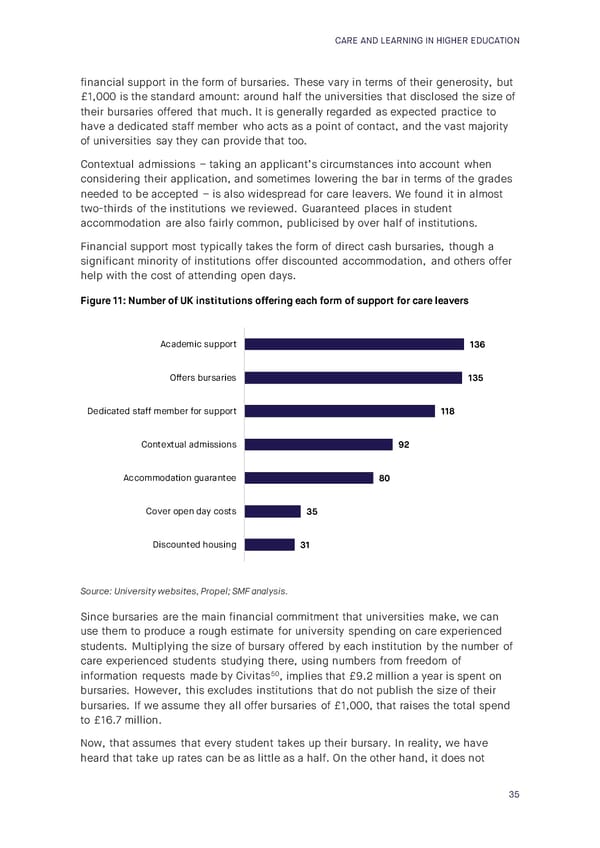CARE AND LEARNING IN HIGHER EDUCATION financial support in the form of bursaries. These vary in terms of their generosity, but £1,000 is the standard amount: around half the universities that disclosed the size of their bursaries offered that much. It is generally regarded as expected practice to have a dedicated staff member who acts as a point of contact, and the vast majority of universities say they can provide that too. Contextual admissions – taking an applicant’s circumstances into account when considering their application, and sometimes lowering the bar in terms of the grades needed to be accepted – is also widespread for care leavers. We found it in almost two-thirds of the institutions we reviewed. Guaranteed places in student accommodation are also fairly common, publicised by over half of institutions. Financial support most typically takes the form of direct cash bursaries, though a significant minority of institutions offer discounted accommodation, and others offer help with the cost of attending open days. Figure 11: Number of UK institutions offering each form of support for care leavers Academic support 136 Offers bursaries 135 Dedicated staff member for support 118 Contextual admissions 92 Accommodation guarantee 80 Cover open day costs 35 Discounted housing 31 Source: University websites, Propel; SMF analysis. Since bursaries are the main financial commitment that universities make, we can use them to produce a rough estimate for university spending on care experienced students. Multiplying the size of bursary offered by each institution by the number of care experienced students studying there, using numbers from freedom of information requests made by Civitas50 , implies that £9.2 million a year is spent on bursaries. However, this excludes institutions that do not publish the size of their bursaries. If we assume they all offer bursaries of £1,000, that raises the total spend to £16.7 million. Now, that assumes that every student takes up their bursary. In reality, we have heard that take up rates can be as little as a half. On the other hand, it does not 35
 Care and Learning in Higher Education Page 35 Page 37
Care and Learning in Higher Education Page 35 Page 37